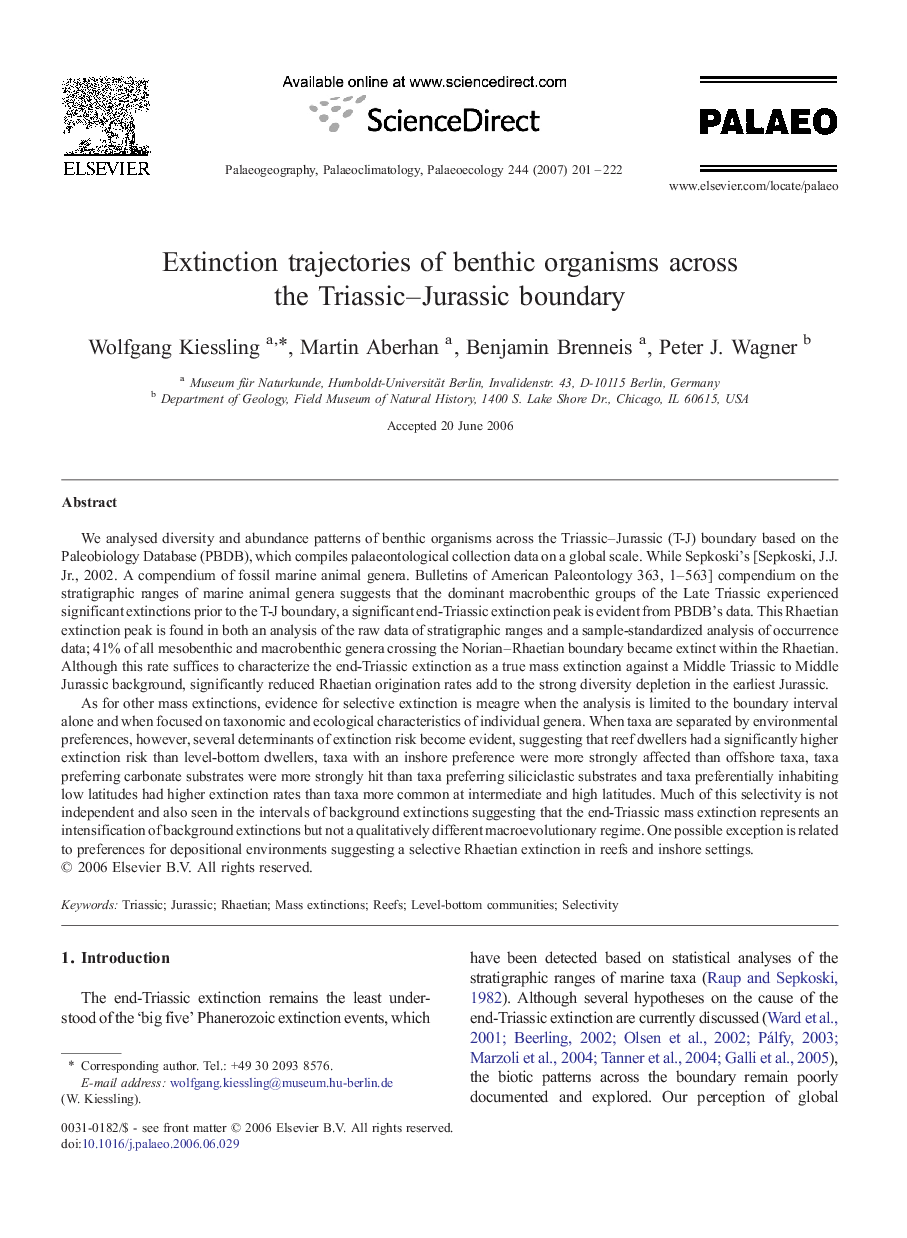| کد مقاله | کد نشریه | سال انتشار | مقاله انگلیسی | نسخه تمام متن |
|---|---|---|---|---|
| 4469230 | 1622359 | 2007 | 22 صفحه PDF | دانلود رایگان |

We analysed diversity and abundance patterns of benthic organisms across the Triassic–Jurassic (T-J) boundary based on the Paleobiology Database (PBDB), which compiles palaeontological collection data on a global scale. While Sepkoski's [Sepkoski, J.J. Jr., 2002. A compendium of fossil marine animal genera. Bulletins of American Paleontology 363, 1–563] compendium on the stratigraphic ranges of marine animal genera suggests that the dominant macrobenthic groups of the Late Triassic experienced significant extinctions prior to the T-J boundary, a significant end-Triassic extinction peak is evident from PBDB's data. This Rhaetian extinction peak is found in both an analysis of the raw data of stratigraphic ranges and a sample-standardized analysis of occurrence data; 41% of all mesobenthic and macrobenthic genera crossing the Norian–Rhaetian boundary became extinct within the Rhaetian. Although this rate suffices to characterize the end-Triassic extinction as a true mass extinction against a Middle Triassic to Middle Jurassic background, significantly reduced Rhaetian origination rates add to the strong diversity depletion in the earliest Jurassic.As for other mass extinctions, evidence for selective extinction is meagre when the analysis is limited to the boundary interval alone and when focused on taxonomic and ecological characteristics of individual genera. When taxa are separated by environmental preferences, however, several determinants of extinction risk become evident, suggesting that reef dwellers had a significantly higher extinction risk than level-bottom dwellers, taxa with an inshore preference were more strongly affected than offshore taxa, taxa preferring carbonate substrates were more strongly hit than taxa preferring siliciclastic substrates and taxa preferentially inhabiting low latitudes had higher extinction rates than taxa more common at intermediate and high latitudes. Much of this selectivity is not independent and also seen in the intervals of background extinctions suggesting that the end-Triassic mass extinction represents an intensification of background extinctions but not a qualitatively different macroevolutionary regime. One possible exception is related to preferences for depositional environments suggesting a selective Rhaetian extinction in reefs and inshore settings.
Journal: Palaeogeography, Palaeoclimatology, Palaeoecology - Volume 244, Issues 1–4, 9 February 2007, Pages 201–222